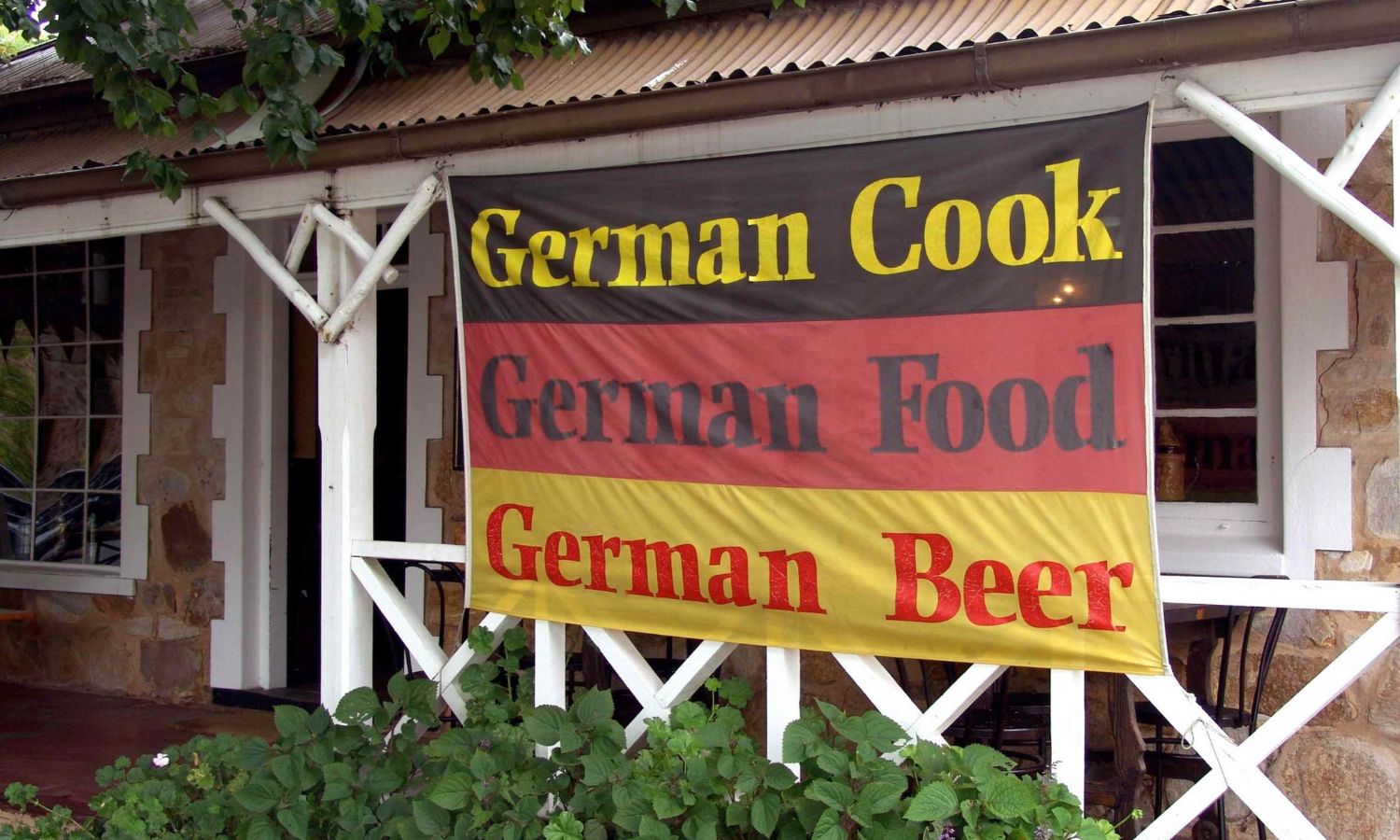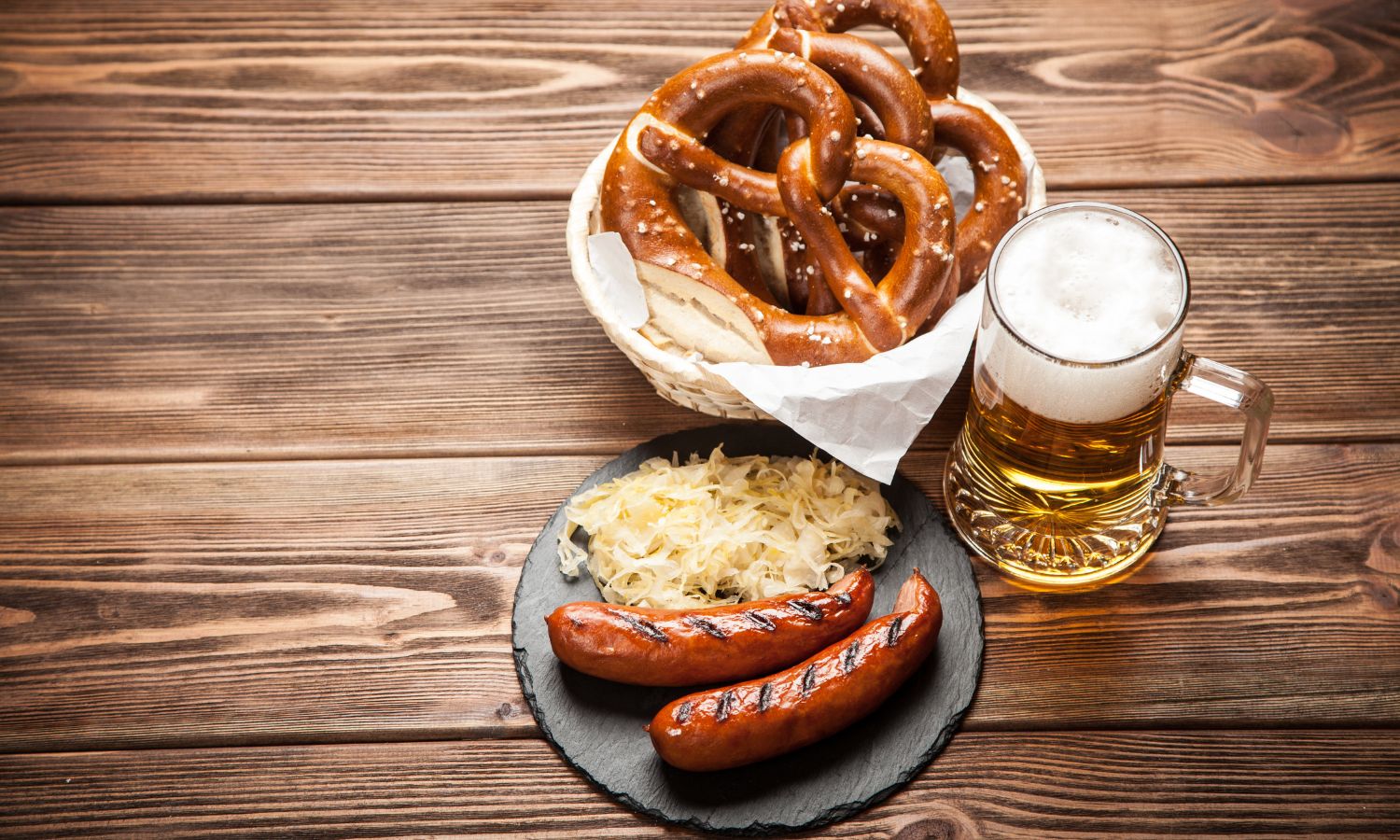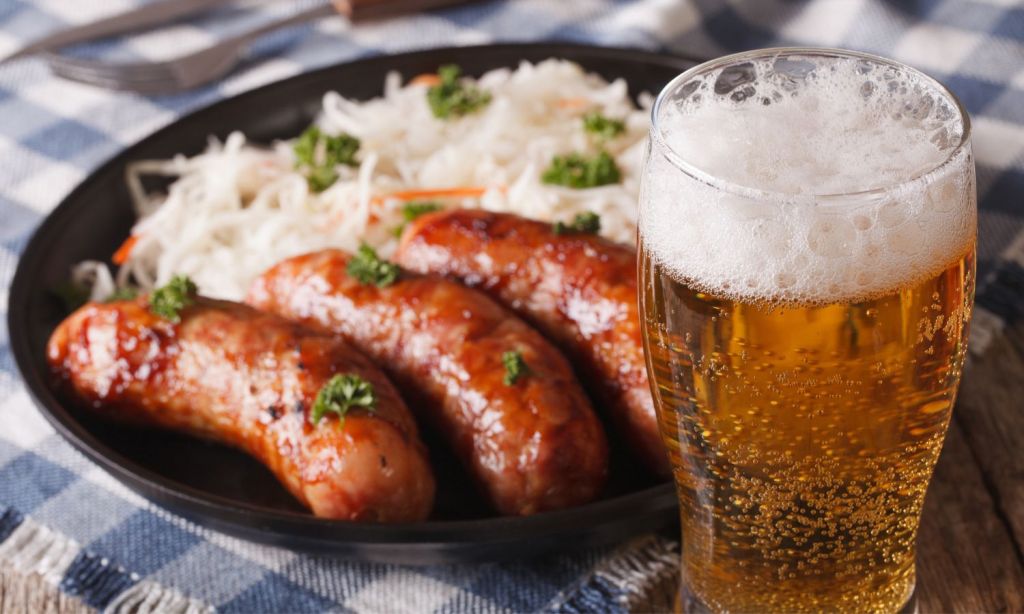French, Italian and Greek are cuisines you see heavily represented in Australia. German? I haven’t seen that as much.
Sure you can get a chicken schnitzel (or “schnitty” as we’d say) or chicken parmigiana (“parmi”) at many Aussie pubs. German beer hall restaurant Munich Brauhaus is in Sydney and Melbourne. Hospitality group The Bavarian has five locations around Sydney, one in ACT and several in Queensland. And a 30-minute drive from Adelaide you’ll find Australia’s largest concentration of German restaurants, bars and cafés in the village of Hahndorf.
The village was established in 1838 when 187 German Lutherans arrived escaping persecution by the King of Prussia. In 1988 Hahndorf was declared a State Heritage Area and now in addition to its eateries, it has wineries, galleries and gift shops. Walking down its main street hearing German jingles drifting from shops and beer steins clinking inside stone-building pubs, I felt like I was in Germany.
Aside from Hahndorf, a handful of German hospitality chains and some independently owned German restaurants in Australia, I don’t see the cuisine represented nearly as much as other European countries. Not to mention most of the German restaurants are concentrated in one area: The Rocks. A quick Google search of ‘German restaurants Melbourne’ brings up six options.

This is particularly interesting considering around 10,000 German migrants came to Australia during the gold rush of the 1850s. More arrived after World War II after being displaced by the war.
A 2021 Australian Bureau of Statistics census found Australia had 101,255 German-born residents. This is compared to 36,019 French-born Australian residents and 171,520 Italian-born Australian residents in 2021 (228,042 Australian residents reported speaking Italian at home).
Don Lama, food and beverage director of The Bavarian and Munich Brauhaus, agrees. He says German cuisine in Australia is still in the process of developing compared to Italian and French restaurants which are well-established. German cuisine, he says, hasn’t reached the level of recognition they have.
“Australians have long loved the classic German dish schnitzel and chicken parmigiana,” Lama says. “This shows there’s already an appreciation for German flavours even if it’s not always recognised as such. Building on these connections, there’s an opportunity to further integrate German food into Australia’s food scene.”
Christian Oblak, owner of Austrian-German restaurant Gasthaus on Queen in Melbourne, says the lack of representation of the cuisine prompted him to open the restaurant.
German and Austrian food is similar — they feature hearty, flavourful dishes made with time-honoured recipes. Meat and potato in a good portion size, paired with a stein of beer. Austrian food is more influenced by Eastern Europe as seen in its dishes like goulash and tafelspitz, simmered beef.

“There is a large German-speaking percentage of people living in Australia with only limited options to get this food,” Oblak says. “It’s certainly getting more popular as we can see more Australians enjoying themselves in Gasthaus on Queen as well as more Asian diners who come especially for the crispy pork we offer or family sharing platters.”
Hofbrauhaus in Melbourne also aims to educate Australians about German food and drink. Food is cooked using old family recipes mostly from the south of Germany. The restaurant is known for its German sausages, schnitzel and pork knuckles but, says Philipp Hockenberger, the restaurant’s brand manager, the cuisine is so much more than that.
“For example, schupfnudel, German gnocchi similar to the Italian version but a bit more dense in its texture and also pan-fried so it gets a nice brown crust,” Hockenberger says. “Traditionally served with sauerkraut, this dish is a highlight at every German winter market during the festive season. There’s also flammkuchen, currywurst, sauerbraten and many other great items in the German cuisine mostly unknown outside Germany.”
A major challenge for German cuisine in Australia becoming more widespread is the scarcity of authentic ingredients. Oblack established importing company and online grocer Kulinarik Trends to ship German and Austrian ingredients to Australia. He says it’s important for Gasthaus to serve traditional with the right ingredients.
Along with a shortage of authentic ingredients, other challenges to the cuisine becoming popular could be limited knowledge of German cuisine — many Australians are unfamiliar with it beyond schnitzel and beer – and a perceived heaviness of the food. There’s a misconception it’s heavy — and consequently unhealthy — which could deter diners.
Compared to other cuisines, German food has fewer food festivals and events promoting it. There may also be a lack of chefs in Australia trained in authentic German cooking techniques. More of these could lead to it becoming more commonplace in Australia.
“I think the biggest challenge for German restaurants overseas is the price points,” Hockenbergersays. “Consumers are fine to pay big dollars for other cuisines like French or Italian. But German cuisine is perceived as a more basic cuisine and people aren’t willing to pay a lot for it. That makes the market quite unattractive for a lot of businesses.”
It’s also worth noting German and Austrian aren’t the only European cuisines under-represented in Australia. When was the last time you dined at a Belgian or Dutch restaurant in Australia? I can’t even think of any of the top of my head.
Lama says he’d like to see more variety in German cuisine in Australia, bringing in regional specialities and seasonal dishes. He’d also like to see more creative twists to traditional German recipes which he thinks would introduce more diners to German cuisine.
Comparing German food to French and Italian in Australia, Oblak says while it may seem like there are many French restaurants here, he can only think of two that would be classified as pure French. Like with German cuisine, French food, he says, hasn’t properly reached Australia yet (some may argue with that). As for what could advance German food in Australia, he’d like to see more interest from locals.
“Discover it for yourself,” he says. “Try something new. Be surprised by our good cuisine and beer, spirits and wine. It’s certainly worthwhile.”
Related: This French Drink Has the Potential to Be the Next Aperol Spritz
Related: Australian Restaurants Are Saying Benvenuta to This Italian Dessert
Read more stories from The Latch and subscribe to our email newsletter.







